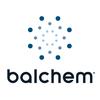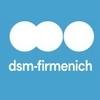Introduction
Trace minerals exist in cells and tissues of the body in a variety of chemical combinations and characteristic concentrations, depending on the trace mineral consumed and the tissue in which the trace mineral is metabolized (McDowell, 1992; Underwood and Suttle, 1999). Concentrations of trace minerals must be maintained within narrow limits in a cell (McDowell, 1989, 1992; Underwood and Suttle, 1999). Trace mineral deficiencies, toxicities, and imbalances require the animal to metabolically compensate for the nutrient deviation (McDowell, 1989, 1992; Underwood and Suttle, 1999). In doing so, certain metabolic diseases can be produced, and overall animal performance can be depressed. Several factors can impact an animal’s response to trace mineral supplementation such as trace mineral dose and duration, physiological status, the absence or presence of dietary antagonists, environmental factors, breed differences, and stress. Moreover, the role that trace minerals play in rumen microbial fermentation is not well understood. Earlier in-vitro research has indicated that high soluble concentrations of Cu and Zn in the rumen environment can become toxic to certain rumen microorganisms and decrease fiber digestion (Forsberg, 1978; Engle, 2020). However, little in vivo research has been conducted investigating the impact of trace mineral solubility in the rumen on microbial fermentation characteristics. Therefore, this review intends to discuss: 1) challenges in beef cattle trace mineral nutrition research and 2) ruminal solubility on rumen fermentation, fiber digestion, and feedlot cattle performance.
Challenges in Beef Cattle Trace Mineral Nutrition Research
Determining mineral requirements: In general, there are two primary methods for determining trace mineral requirements for beef cattle: 1) the factorial method and 2) dietary dose response experiments. Factorial method estimates are derived by summing the components of the net requirements for maintenance and production, then dividing by the coefficient of absorption for a specific mineral (McDowell, 1992; Underwood and Suttle, 1999). The advantages of using factorial estimates are that trace mineral requirements can be estimated over a wide range of production levels and physiological stages (Underwood and Suttle, 1999). This approach has a high degree of accuracy for most macro minerals such as Ca and P. However, the disadvantage is that absorption coefficients are difficult to accurately estimate. For example, not all of the minerals absorbed by the animal have a function and may be excreted in the urine or can be excreted back into the gastrointestinal tract (BR-Corte, 2016). Furthermore, absorption coefficients can be impacted by dietary components (antagonists, high soluble protein, etc.), physiological status of the animal, and the concentration of the minerals in the diet (McDowell, 1992; Underwood and Suttle, 1999). As the mineral content in the diet increases above the requirement, homeostatic mechanisms are induced in the gastrointestinal tract to slow mineral absorption. Therefore, it is important to ensure that the estimated absorption coefficient is accurate when determining the mineral requirement for beef cattle using the factorial method. If possible, using true absorption coefficients (adjusted for unused minerals excreted in the urine and endogenous minerals excreted back into the gastrointestinal tract) may provide a more accurate coefficient of absorption for determining mineral requirement using the factorial method.
Dietary experimentation estimates are the most common method for determining mineral requirements for beef cattle. This type of experimentation requires feeding different concentrations of a specific mineral (above and below the animal’s actual requirement) and measuring important response variables such as growth, tissue concentrations of the target mineral, apparent absorption and retention of the target mineral, etc. (McDowell, 1992; Underwood and Suttle, 1999). The advantage of this approach is that it provides an estimate of the requirement in the whole animal, usually over a long period of time. However, the disadvantage of using this approach is that supplementing several concentrations of a given mineral does not give a very precise estimate of the requirement. Furthermore, it is also dependent on what response variables are measured (e.g., the Zn requirement for optimizing growth in bulls may be less than the Zn requirement for optimizing spermatogenesis).
Factors That Can Alter Trace Mineral Metabolism:Despite the involvement of certain trace minerals in animal production and disease resistance, deficiencies of trace minerals have not always reduced performance or increased the susceptibility of domesticated livestock species to natural or experimentally induced infections (Spears, 2000; Kegley et al., 2016). As mentioned previously, many factors can impact an animal’s response to trace mineral supplementation such as the duration and concentration of trace mineral supplementation, physiological status of an animal (e.g., pregnant vs. non-pregnant), the absence or presence of dietary antagonists, environmental factors and the influence of stress on trace mineral metabolism (Baker et al., 2003). For the purpose of this portion of the review, five areas deserve attention when discussing potential factors that may affect the trace mineral requirements of ruminants: breed, gestational status, stress, trace mineral antagonists, and age.
Breed:Although species differences in trace mineral metabolism have long been recognized, differences in trace mineral metabolism between breeds within a species do exist. In an experiment by Du et al. (1996), Holstein (n=8) and Jersey (n=8) primiparous cows and Holstein (n=8) and Jersey (n=8) growing heifers were supplemented with either 5 or 80 mg of Cu/kg DM for 60 d. At the end of the 60 d experiment, Jerseys had higher liver Cu concentrations relative to Holsteins across both treatments. Furthermore, liver Cu concentrations increased more rapidly and were greater in the Jerseys supplemented with 80 mg of Cu/kg DM compared to Holsteins supplemented with 80 mg of Cu/kg DM by d 60 of the experiment. Overall serum ceruloplasmin oxidase activity (a Cu-dependent enzyme involved in Fe transport) was higher in Jerseys than Holsteins. Additionally, Jersey cows and heifers had higher liver iron (Fe) and lower liver Zn concentrations than Holstein cows and heifers at d 60 of the experiment. These data indicate that Jerseys and Holsteins metabolize Cu, Zn, and Fe differently.
Ward et al. (1995) conducted a metabolism study in which Angus (n=8) and Simmental (n=8) steers were placed in metabolism crates to monitor apparent absorption and retention of Cu. At the end of the 6 d metabolism experiment, plasma Cu concentrations and apparent absorption and retention of Cu were greater in Angus relative to Simmental steers. The authors indicate, from their data as well as from others, that Simmental cattle may have a higher Cu requirement than Angus cattle and that these different requirements may be related to differences in Cu absorption in the gastrointestinal tract between the two breeds (Ward et al., 1995 and Mullis et al., 2003). Furthermore, it has also been suggested that these breed differences in Cu metabolism may not be due solely to differences in absorption, but also to the manner in which Cu is utilized or metabolized post-absorption. Gooneratne et al. (1994) reported that biliary Cu concentrations are considerably greater in Simmental cattle than in Angus cattle. It is apparent that differences in Cu metabolism exist between Simmental and Angus cattle both at the absorptive and post-absorptive levels.
An extensive study comparing the mineral status of Angus, Braunvieh, Charolais, Gelbvieh, Hereford, Limousin, Red Poll, Pinzgauer, and Simmental breeds consuming similar diets has also been conducted (Littledike et al., 1995). This work compared not only Cu, but also Zn and Fe status between all previously mentioned breeds of cattle. In adult cattle, it was shown that Limousin liver Cu concentrations were greater than all other breeds, except for Angus. This same trend was not observed for Zn or Fe; with very little breed differences observed except for lower liver Zn concentrations in Pinzgauer when compared to Limousin. Serum Zn and Cu concentrations did not differ by breed.
Gestational Status:Although little data has been published examining the effects of gestational status on trace mineral metabolism in cattle, several experiments have been conducted using laboratory animals and humans that indicate trace mineral metabolism is altered during pregnancy. Zinc concentrations in bovine conception products (placenta, placental fluids, and fetus) increase as the fetus grows (Hansard et al., 1968). Studies using rats have shown that the overall maternal body stores of Cu and Zn increase during pregnancy and then decrease during lactation. Mean Zn total body stores at the beginning of pregnancy were recorded at 5,260 µg of Zn versus 5,810 µg of Zn at d 15 of pregnancy. By d 14 of lactation, maternal body stores of Zn had decreased to 5,640 µg of Zn, which was still considerably higher than at the onset of pregnancy (Williams et al., 1977). Vierboom et al. (2002) reported that pregnant cows and sheep absorbed and retained Zn to a greater degree than non-pregnant cows and sheep. These data indicate that certain physiological and/or metabolic parameters are altered in pregnant cows and ewes consuming an alfalfa-based diet that enhances the apparent absorption and retention of certain trace minerals.
The aforementioned data indicate that Cu and Zn metabolism is altered in pregnant vs. nonpregnant animals. Further research is required to determine the metabolic mechanisms that enable pregnant animals to alter Cu and Zn metabolism as well as an animal’s specific metabolic requirement for both maintenance and fetal development. In addition, research is needed to determine the effects of gestational status on the metabolism of other trace minerals, and the effect of breed on trace mineral metabolism and gestational status.
Stress:As mentioned earlier, trace minerals such as Cu and Zn are involved in immune response. Deficiencies and or imbalances of these elements can alter the activity of certain enzymes and functions of specific organs, thus impairing specific metabolic pathways and overall growth of the animal.
Stressors from animal production include infection, environmental factors, parturition, lactation, weaning, transport, and handling. Stress induced by parturition, lactation, weaning, and transport has been shown to decrease the ability of the animal to respond immunologically to antigens that they encounter. Furthermore, research has indicated that stress can alter the metabolism of trace minerals. Stress in the form of mastitis and ketosis has been shown to alter Zn metabolism in dairy cattle (Zhang et al., 2010). Orr et al. (1990) reported an increase in urinary Cu and Zn excretion in cattle inoculated with IBRV. Furthermore, Nockels et al. (1993) reported that Cu and Zn retention was decreased in steers injected with ACTH (a stressor) in conjunction with feed and water restriction. These studies indicate that stress in the form of an infection (IBRV), a metabolic disorder (ketosis), or deprivation of feed and (or) water can increase Cu and Zn depletion from the animal.
Trace Mineral Antagonists:Many element-element interactions have been documented in the literature (for an in-depth review of potential element-element interactions, see Puls, 1994). These include Zn-Fe, Cu-Fe, Cu-sulfur (S), Cu-molybdenum (Mo), Cu-Mo-S interactions, and interactions between elements and other dietary components. Peres et al. (2001) used perfused jejunal loops of normal rats to characterize the effects of the Fe:Zn ratio in the diet on mineral absorption. When the Fe:Zn ratio in the diet was held below 2:1, no detrimental effects on absorption were observed. However, once concentrations were increased to yield a ratio between 2:1 and 5:1, Zn absorption was decreased. Similar effects have also been seen for Cu absorption, with depressed Cu uptake in the presence of excess Fe (Phillippo et al., 1987).
The best-known mineral interaction that can cause a reduction in Cu absorption and utilization is the Cu-Mo-S interaction. However, even Mo or S alone can have antagonistic effects on Cu absorption. Suttle (1974) reported that plasma Cu concentrations were reduced in sheep with increasing concentrations of dietary S from either an organic (methionine) or inorganic (Na2SO4) form. In another experiment, Suttle (1975) demonstrated that hypocupraemic ewes fed Cu at a rate of 6 mg Cu/kg of diet DM, with additional S or Mo, exhibited slower repletion rates than sheep fed no Mo or S. However, when both Mo and S were fed together, Cu absorption and retention were drastically reduced. Furthermore, in addition to independent Cu-S and Cu-Mo interactions, there is a three-way Cu-S-Mo interaction that renders these elements unavailable for absorption and/or metabolism due to the formation of thiomolybdates (Suttle, 1991).
Ward (1978) also investigated the independent effect of Mo on Cu absorption and concluded that elevated Mo intake reduces Cu availability and can lead to a physiological Cu deficiency. This was attributed to a Cu-Mo complex which forms in the rumen that cannot be broken down and absorbed. Based on this and previous experiments, it appears that the ratio of the antagonistic elements seems to be more important than the actual amounts. Miltimore and Mason (1971) reported that if Cu:Mo ratios fall below 2:1, Cu deficiency can be produced. Huisingh et al. (1973) further concluded, in their attempt to produce a working model of the effects of S and Mo on Cu absorption, that both S (in the form of sulfate or S-containing amino acids) and Mo reduce Cu absorption due to the formation of insoluble complexes. They also noted that S and Mo interact independently and suggested that these elements may share a common transport mechanism.
Mineral-to-mineral interactions are not the only possible inhibitors of mineral absorption. Other dietary components can also inhibit or enhance the amount of mineral that is absorbed. Protein, as might be expected from the discussion involving S-containing amino acids, is an example of a dietary component that can impact mineral metabolism. Snedeker and Greger (1983) reported that high protein diets significantly increase apparent Zn retention. In contrast, diets high in Scontaining amino acids have been shown to decrease Cu absorption, most likely due to the formation of insoluble Cu-S and potentially Cu-S-Mo complexes (Robbins and Baker, 1980).
In his review, O’Dell (1984) also noted the potential for carbohydrate sources to impact Cu absorption. This is attributed to phytate and oxalate concentrations in the diet. Fiber can also act as a mineral trap due to its relatively large negative charge that serves to bind the positively charged divalent metal cations, rendering them unavailable for absorption (van der Aar et al., 1983).
Age:Animals have also been shown to have varying mineral requirements depending on their age. Trace mineral requirements have been reported to vary with age of dairy cattle (NRC, 2001). Wegner et al. (1972) reported that dairy cattle in their second to fifth lactations had higher serum Zn concentrations than either first lactation or bred heifers. This change in mineral needs over time is most obvious in young growing animals.
Trace Mineral Solubility and Impacts on Fiber Digestion in Ruminants
Trace mineral (TM) sources can be classified into two major categories: 1) inorganic (ITM) and 2) organic TM (OTM; Clarkson et al., 2021). Inorganic TM contains a metal ion that maintains a weak intramolecular bond with non-metals such as carbon, oxygen, or sulfur (Clarkson et al., 2021), whereas OTM is defined as a metal ion bound to an amino acid, protein complex, or polysaccharide and can be referred to as complexes, chelates, or proteinates (Spears, 1996). Hydroxy TM (HTM) is a relatively new form of ITM, but unlike traditional ITM, HTM complexes are formed by covalent bonds between the metal ion, hydroxyl groups, and chloride. This molecular structure has been reported to give HTM, OTM-like properties (Arthington, 2015).
The differences in chemical properties of different TM sources can influence their bioavailability and efficacy as supplements. Solubility plays an important role in determining bioavailability as it allows the minerals to be absorbed into the bloodstream of the animals (Ibrahim et al., 1990; Underwood and Suttle, 1999; Clarkson et al., 2021). In order for an inorganic trace element (e.g., CuSO4) to become soluble in a solution (e.g., water), the intermolecular forces of the ionic bond between the element and its original ligand need to be lesser than the ion-dipole interaction with water (or the primary solution). Other factors that influence solubility of ITM are pH, temperature, ligand species, particle size, hygroscopy, and antagonist present in the solution. Trace minerals that have stronger covalent bonds between the element and ligand (OTM and HTM) are typically less soluble in water (but not always). In theory, this stronger bond prevents the element from interacting with antagonists in the digesta, ultimately improving absorption and overall bioavailability.
Numerous experiments have been conducted examining the impact of trace mineral sources on beef cattle performance, health, and carcass characteristics. However, little information is available on how trace mineral source influences rumen fermentation. Rumen microorganisms require Cu and Zn for catalytic, structural, and stabilizing functions. In order for microorganisms to acquire Cu and Zn, the elements must be soluble in the rumen environment. In-vitro and in vivo data suggest that practical diets fed to ruminants without trace mineral supplementation are able to meet the microbial Cu and Zn requirements (Engle, 2020). Therefore, rumen solubility of supplemental Cu, and Zn, for example, can impact rumen microbial fermentation characteristics. High-media Zn concentrations have been shown to result in Zn accumulation in the endoplasm of ciliated protozoa (Bonhomme et al., 1980) and to inhibit their growth in vitro (Bonhomme et al., 1979). Cellulolytic bacterial activity (Bonhomme et al., 1979) and concentrations of cellulolytic bacteria (Eryavug and Dehority, 2009) were also reduced by high Zn concentrations in vitro. The addition of 40 mg Zn/kg DM from ZnSO4 to a diet that analyzed 22 mg Zn/kg did not affect NDF digestibility in one experiment with lambs (VanValin et al., 2018), but did reduce NDF digestibility in a follow-up study (VanValin et al., 2020). High Cu concentrations have been reported to reduce bacterial populations through toxicity due to bioaccumulation of Cu within bacterial cells, reduction of Cu+2 to Cu+1 which is more toxic to bacteria, and/or causing the cell to activate Cu export pumps to alleviate Cu accumulation in bacteria (Osman and Cavet, 2008; Hernandez-Sanchez et al., 2018). The addition of low concentrations of Cu from CuSO4 reduced in-vitro cellulose digestion by ruminal microorganisms (Ward and Spears, 1993). Hydroxychloride sources of Cu and Zn were less soluble in the ruminal environment than sulfate forms in cattle fed a corn silage-based diet (Caldera et al., 2019) and medium-quality grass hay-based diet (Guimaraes et al., 2021). This is consistent with earlier findings that sulfate sources of Cu and Zn are highly soluble in water and in acid solutions, whereas HTM sources of Cu and Zn are much less soluble in water and have increased solubility as pH becomes more acidic (Cao et al., 2000; Spears et al., 2004). High concentrations of soluble Cu and Zn in the rumen can negatively impact fiber digestion (Durand and Kawashima, 1980), and alter ruminal fermentation (Daniel et al., 2020; Guimaraes et al., 2021). Replacing sulfate trace minerals (STM) with HTM improved NDF digestibility in lactating dairy cows when total fecal output was measured over a 4-d period (Faulkner and Weiss, 2017). Other studies, using indigestible NDF to estimate digestibility, also reported improved NDF digestibility in lactating dairy cows fed HTM compared with STM (Daniel et al., 2020; Miller et al., 2020) sources of Cu, Mn, and Zn. It is unclear if the greater NDF digestibility in cows fed HTM sources of Cu, Mn, and Zn is caused by changes in digestibility of hemicellulose, cellulose, or both.
Organic forms of Cu or Zn may also affect fiber digestibility differently than sulfate forms. Lambs receiving 10 or 20 mg supplemental Cu/kg DM from Cu proteinate had greater digestibility of NDF and ADF than lambs given a similar amount of Cu from Cu sulfate (Dezfoulian et al., 2012). Compared to Zn sulfate, supplementation with organic forms of Zn increased NDF and ADF digestibility in lambs in some studies (Garg et al., 2008; Alimohamady et al., 2019), whereas results in VanValin et al. (2018) seemed contradictory. Limited research also suggests that Zn provided in a form of amino acid complex may affect the rumen bacterial community differently than Zn sulfate in lambs (Ishaq et al., 2019).
Presented at the 2024 Animal Nutrition Conference of Canada. For information on the next edition, click here. 










